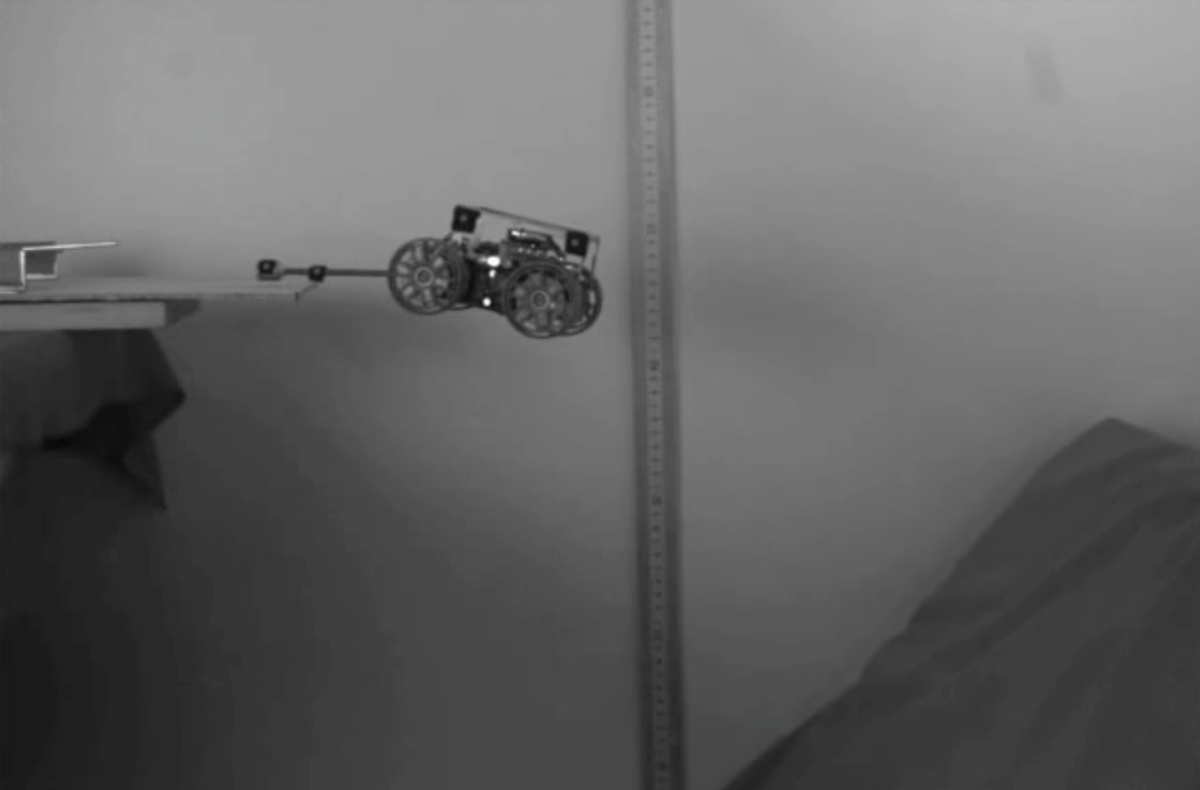When we posted about UC Berkeley's Tailbot last week, we mentioned that the robot was originally presented back at IROS, the IEEE International Conference on Intelligent Robots and Systems. Evan Chang-Siu and Thomas Libby, two of the authors of the IROS paper, wrote in to point out a few additional tricks that Tailbot has up its sleeve and share some extra video with us.
The video shows a series of experiments that Chang-Siu, a researcher at UC Berkeley's Mechanical Systems Control Laboratory, led by Professor Masayoshi Tomizuka, and Libby, now at Berkeley's Center for Interdisciplinary Biological Inspiration in Education and Research (CiBER), performed with Tailbot:
The first clip in the video (Exp. 1, after the lizard footage) shows that the robot, when dropped, can right itself and maintain a horizontal orientation with respect to the ground (we discussed this capability in last week's post). The main limitation is that, in some situations (e.g. a nose-up drop), the tail can't move far enough to exert the amount of torque required to completely reorient the body (the tail becomes "saturated") -- this is what the next clip (Exp. 2a) illustrates.
Next we see another nose-up drop, but with the robot next to a wall (Exp. 2b). In this case, Tailbot can use its tail to push off the wall, exerting more force than would otherwise be possible through just the conservation of angular momentum. This allows Tailbot to fully orient itself, even after a tail-first drop.
The next clips (Exp. 3a, b, c) illustrate how the presence of a tail can help the robot negotiate obstacles without flipping over. A passive tail is better than no tail, and an active tail is even better, the experiments show.
Finally, we see the coolest experiment of all: Tailbot jumping off a cliff and attempting to land on a slope (Exp. 4). Indeed, it's a big world out there, and most of it isn't covered in surfaces that are vertical or horizontal. In the wild, if Tailbot finds itself in the air, odds are it'll be landing on some sort of slope. The clip shows that the bot can use its tail to orient itself and make perfect landings on an angled surface.
This project captured widespread attention in the robotics community and beyond. Tailbot is giving researchers a pretty good picture of the capabilities that robots with active tails are going to have access to. The next challenges for the UC Berkeley team and other groups include developing multi-axis tails as well as sensors and control systems that are fast and accurate enough to take advantage of this newfound midair agility.
Chang-Siu and Libby also sent us some extra photos. Here's a look of the robot's innards. The researchers replaced the existing control circuitry of the vehicle (a Radio Shack FlipZ radio-controlled car) with custom electronics that included a microcontroller (Arduino Pro Mini), motor driver, 3-axis Analog Devices accelerometer, Invensense gyroscope, Xbee wireless communication module, and LED indicators. The robot uses two lithium-polymer batteries, and the tail consists of a carbon fiber tube with a brass tip.
[ UC Berkeley's Mechanical Systems Control Laboratory ]
Thanks Tom and Evan!
Evan Ackerman is a senior editor at IEEE Spectrum. Since 2007, he has written over 6,000 articles on robotics and technology. He has a degree in Martian geology and is excellent at playing bagpipes.





